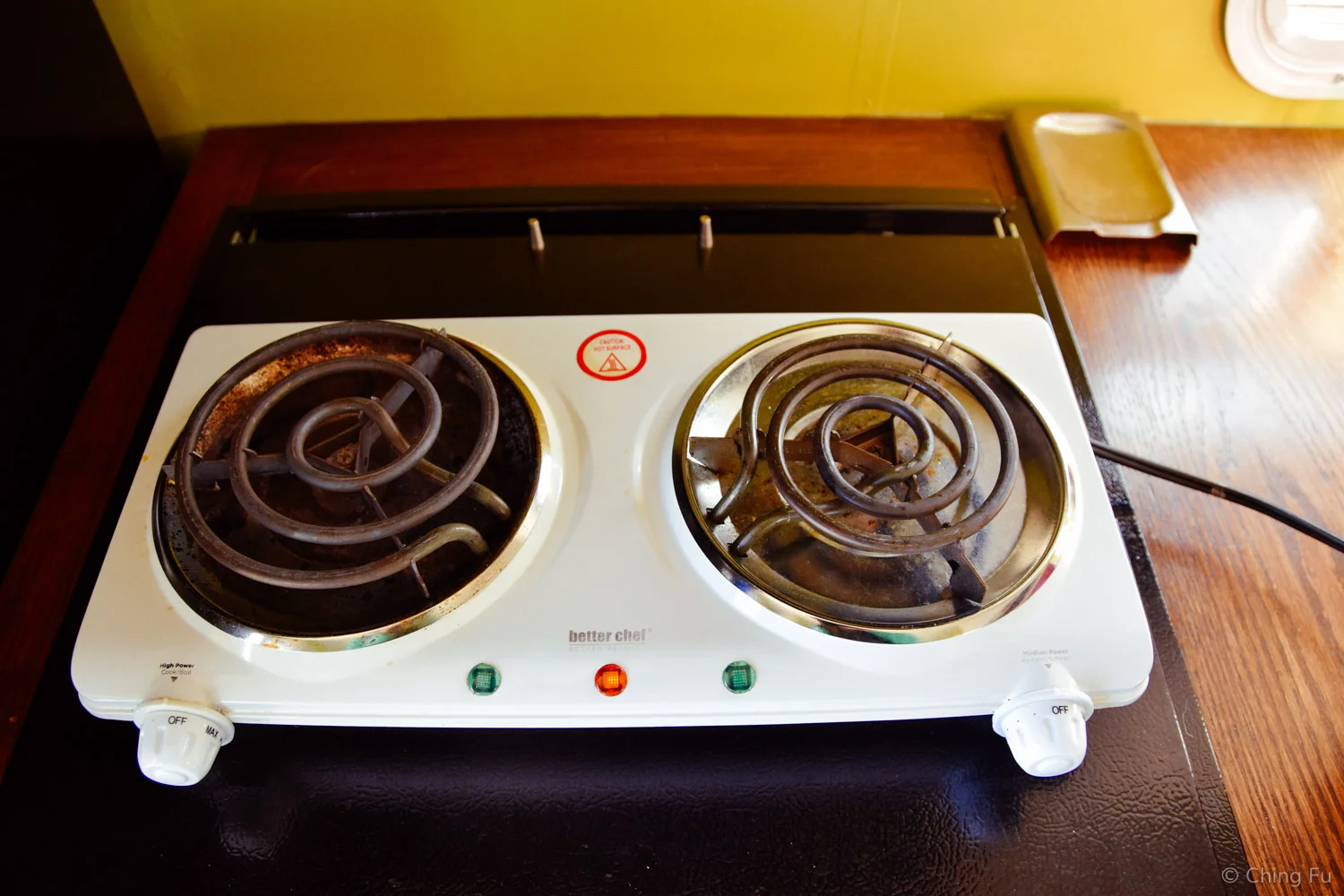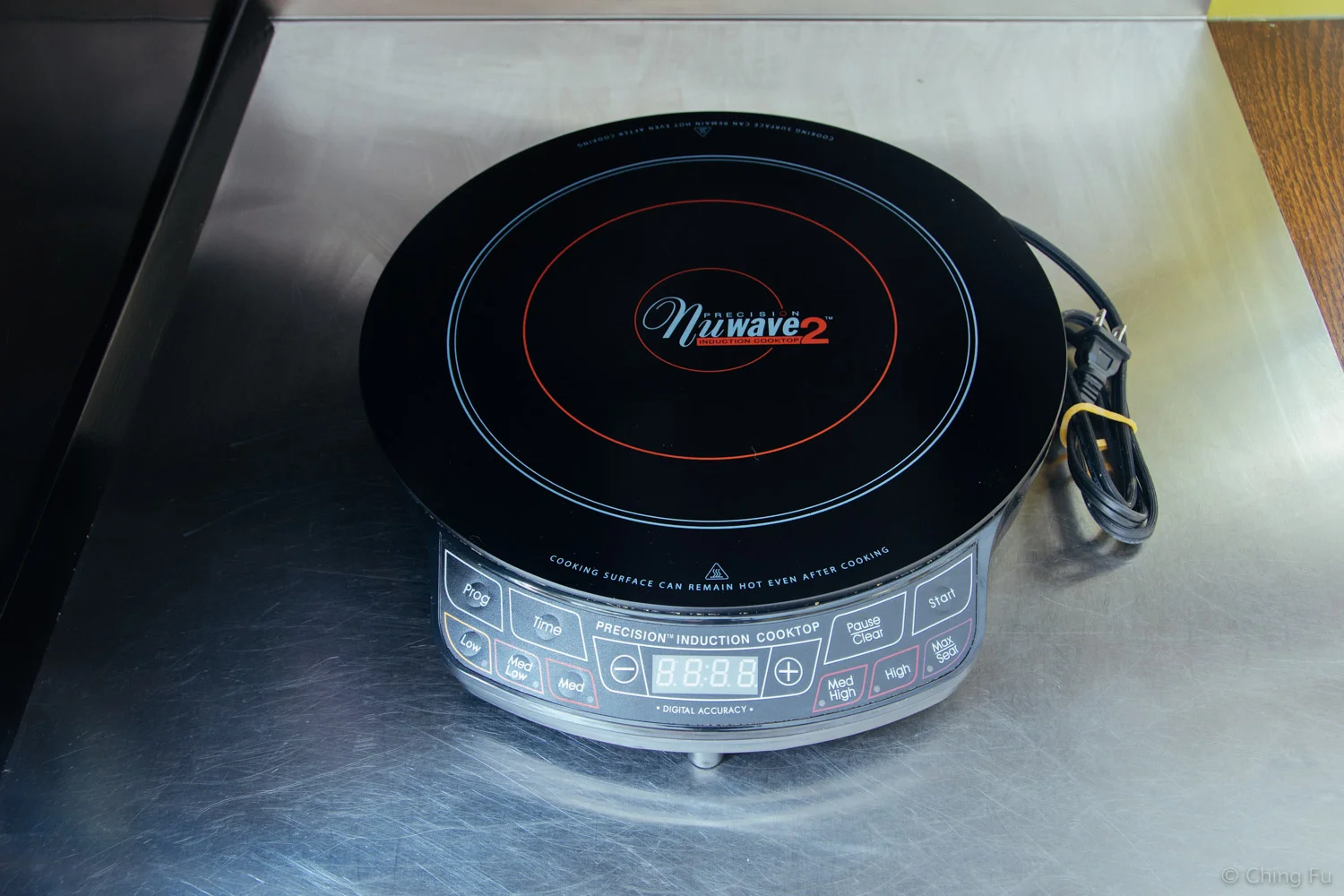Why Induction Cooktops Are Better Than Electric
Disclosure: This post contains Amazon affiliate links. As an Amazon Associate we earn a small commission at no additional cost to you. Please read our disclaimer.
Induction Cooktop Vs. Electric Cooktop
An induction cooktop is better than an electric cooktop for several reasons, especially when you’re dependent on solar power:
More energy efficient
Better control of cooking temperature
Cooks food faster
Easier to clean than an electric coiled cooktop
Higher cook temperature is available
Safer because it’s harder to accidentally leave on
There are two downsides to induction cooktops:
They cost more
You need compatible cookware to use with it, which could mean buying completely new pots and pans
Although both the induction and electric cooktop cycles its power on and off to stay at a chosen temperature, the electric cooktop does it inefficiently. For example: our previous electric cooktop would cycle on at 1,500 watts whether the temperature was set on “Low”, “Medium” or “High”. The only difference was the length of time it’d stay on. This meant that for low-temperature cooking, the electric cooktop would get too hot and burn things, then turn off to the point that it stopped cooking, then turn back on and burn it some more. We were not going to be caramelizing onions with that.
This is the electric cooktop we used for about a year before switching to an induction cooktop.
The induction cooktop differs because, for example, if the temperature was set to 275° it wouldn’t cycle on at 1,500 watts. Instead it would cycle on at 600 watts but it may stay on longer than if it were an electrical stove cycling on at 1,500 watts. If the induction cooktop was set to a higher temperature then it would cycle on at a higher wattage. Overall the induction stove uses less electricity, cooks food more evenly, and keeps the stovetop closer to the chosen temperature without the extreme highs and lows that an electrical stovetop creates. Also, because the induction cooktop typically uses less wattage, we’re able to have other large loads pull from the inverter at the same time, for example our ceramic electric space heater, without exceeding the inverter’s capacity.
The first induction cooktop that we purchased.
Jerud was happy to create some graphs to help explain this. In the graph on the left below, it shows what the wattage does when the cooktop is set to 450° on an induction cooktop vs. electric cooktop. The cooktops both use 1,500 watts, but you can see that the induction cooktop cycles on and off for less time than the electric cooktop does.
The graph on the right shows that the cooking temperature stays closer to the target without going too high or too low in the induction cooktop, unlike the electric cooktop where temperatures vary more at longer periods of time.
The next two graphs show the same thing as above, but with the cooktops set to 250°. The difference of wattage used in a induction vs. electric cooktop is a lot more obvious in these graphs and with the temperature changes in the graph on the right.
One Burner Vs. Two Burner Cooktop
We decided to get a one burner induction cooktop instead of a two burner for a few different reasons:
Even though our electric cooktop was a two burner, it was sketchy to cook with two pots/pans side by side. So we got used to just cooking one pot at a time.
If two burners were on at the same time it would draw more wattage. Since our inverter is only 2,800 watts, it means we'd have to be more conscious of the wattage we were pulling at one time.
Two burner induction cooktops that are also portable aren't that common.
The two burner induction cooktops that are available are a lot more expensive.
A one burner cooktop takes up less space.
So what do we do if we need to keep food warm while we finish cooking? We stick things into our Black and Decker extra wide toaster oven! Works great.
Has anyone else converted over from either an RV propane stove or electric cooktop to an induction cooktop?




